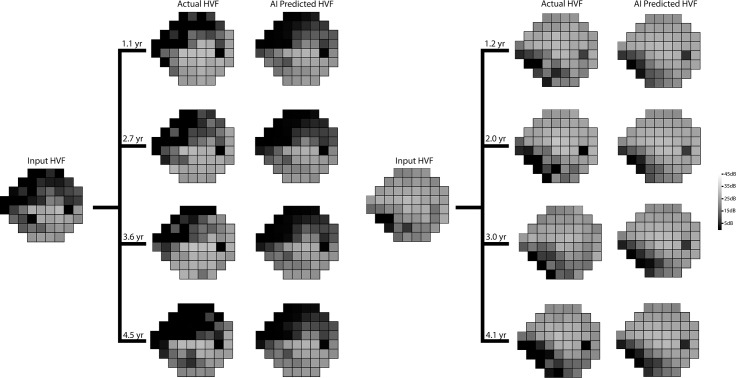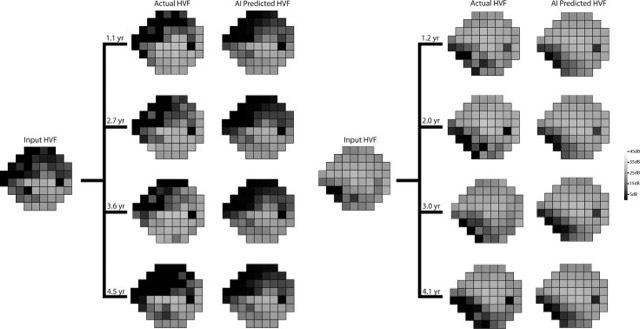Glaucoma is a leading cause of blindness worldwide, and the ability to quickly anticipate future disease progression may prevent unnecessary vision loss. Humphrey visual field testing is the standard method used to evaluate disease progression in glaucoma patients. This test uses linear regression of certain global eye measurements to monitor damage and predict risk for disease progression. It has some shortcomings in that does not take into account the spatial nature of visual field loss in glaucoma and relies on global indices rather than more focal measurements. Newer models have been developed that are better at detecting subtle changes and can identify disease progression earlier, but they require a multiple vision field tests to achieve accurate results. In this study, the authors aimed to develop a deep learning generative model to predict disease progression (to predict future visual fields with preserved spatial information) using minimal baseline visual field testing as input.
Deep learning models were trained on temporal data from a large group of patients using unfiltered real-world datasets. The deep learning networks were able to learn spatio-temporal Harvey visual field changes and to generate predictions for future (up to 5.5 years) Harvey visual fields, given only a single Harvey visual field as input.

Previous applications of deep learning in glaucoma have been limited to classification rather than forecasting and included analysis of disc photos and optical coherence tomography images in addition to visual fields. This study demonstrates a novel application of deep learning to build generative models in glaucoma. These forecasted visual fields have the potential to guide clinical decision-making and disease management. Future research will focus on developing models that incorporate additional clinical parameters to assess their effects on forecasted visual fields and progression, which may aid in clinical decision making. Additionally, the model could be used to determine how Harvey visual fields would change depending on the intervention selected for each individual patient. This type of artificial intelligence application may help enable precision medicine for glaucoma management in the future.
Wen JC, Lee CS, Keane PA, Xiao S, Rokem AS, Chen PP, Wu Y, Lee AY. Forecasting future Humphrey Visual Fields using deep learning. PLoS One. 2019;14(4):e0214875. doi: 10.1371/journal.pone.0214875. eCollection 2019. PubMed PMID: 30951547; PubMed Central PMCID: PMC6450620.

